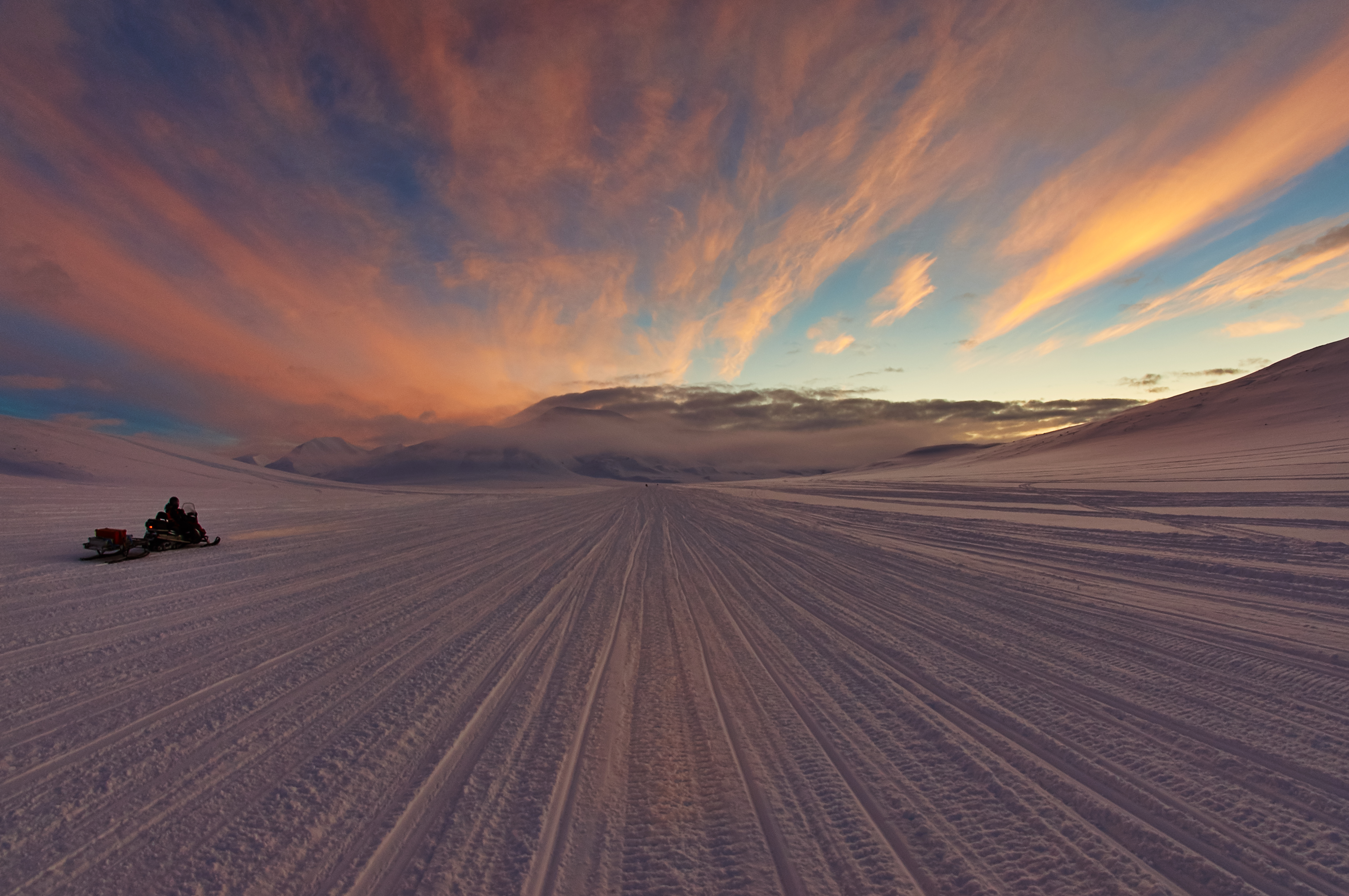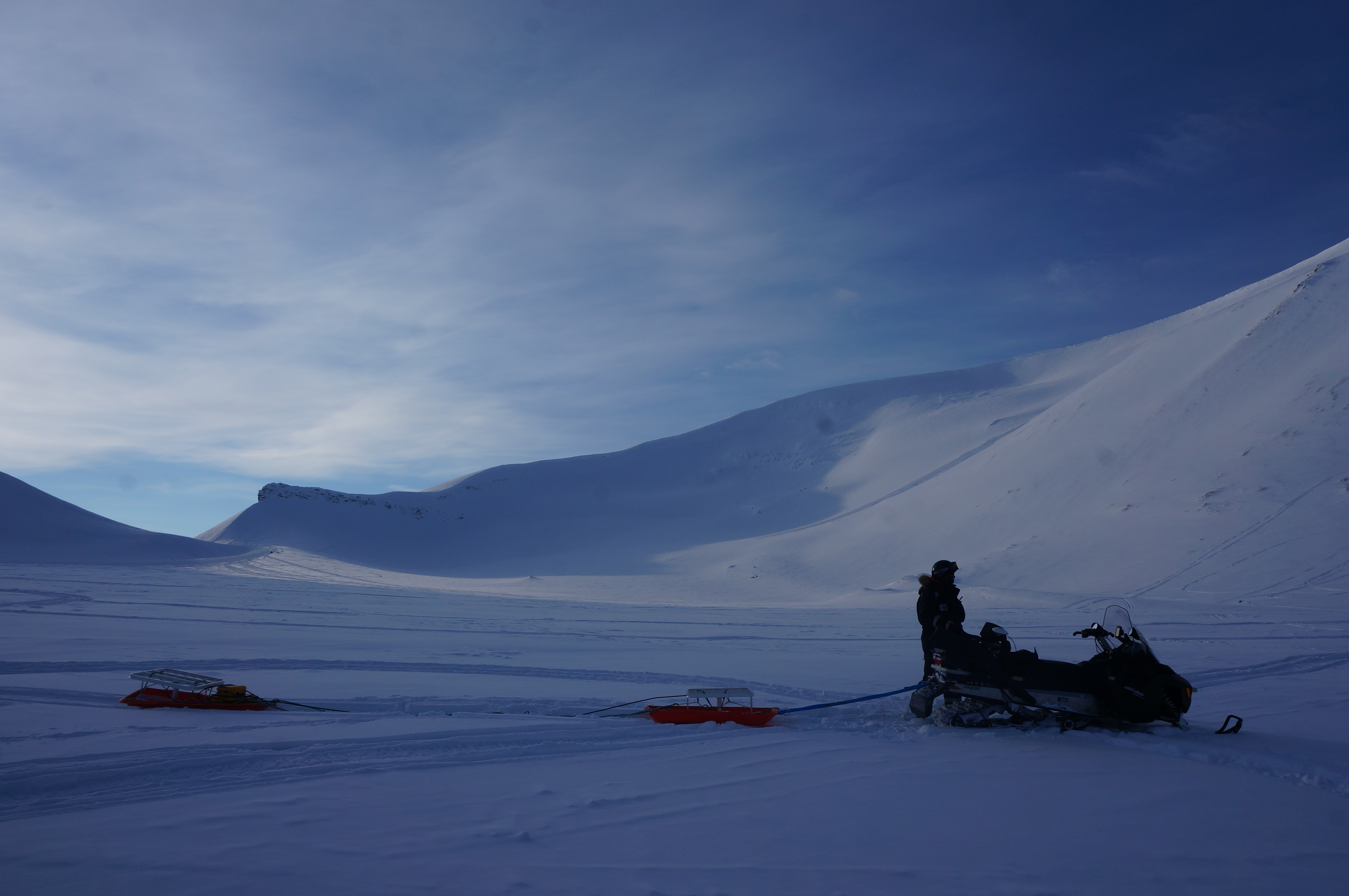PhD update: March 2016
This month I was meant to go back to Edinburgh... but I didn't! Instead I stayed on to help with some radar surveying fieldwork after the end of the glaciology course (AG-325/825). I am also nearing the finish line with the first complete chapter of my thesis which a methodology/review of photogrammetry techniques in glaciology. The process has been really helpful for seeing how far the technique has developed in just a few years.
This month marked the end of the glaciology course (AG-325/825) at the University Centre in Svalbard (UNIS). The final field excursion to Mohnbukta was fantastic, examining an ocean-terminating calving front which is the product of three converging glaciers - Konigsbergbreen, Hayesbreen and Heuglinbreen. The drive back from the east coast offered some incredible sunset views. This is one of the best times to be in Svalbard for sunsets because the newly risen sun creates some beautiful, dramatic colours in the sky. I wrote a blog post on some of my favourite photos from the course, which can be found here.

A fantastic view whilst the AG-325 glaciology group were travelling back from their final excursion to Mohnbukta, on the east coast of Svalbard. Photo credit: Alexander Marx (for more of Alex’s photos, click here)
After the course finished mid-March, I opted to stay on in Svalbard to provide logistical support for Richard Delf (@delfd1), a PhD student from the glaciology group at the University of Edinburgh (@EdinGlaciology), whose PhD is looking at implementing new radar techniques on glaciers to better understand glacier dynamics. Ground penetrating radar (GPR) uses electromagnetic radiation to image the inside of a glacier, from the surface to the glacier bed. The velocity at which electromagnetic waves travel through the ice depends on the ice properties, namely the water and debris content. This measured velocity is used to infer the ice thickness, the type of ice in the profile, and whether there are any channels present. Interpreting GPR data is difficult though, and sometimes subjective. Richard's PhD aims to better the collection and interpretation of this kind of data.
To begin Richard's PhD, we have been collecting GPR survey data from two glaciers in Svalbard - Longyearbreen, which is one of the glaciers at the top of the town of Longyearbyen in Svalbard; and Tellbreen, which we visited in the second week of the glaciology course. We are using multiple antennas to get a range of data sets from these glaciers, including rough terrain antennas (RTA), unshielded antennas (i.e. the distance between the transmitter and receiver can be altered), and phase-sensitive radio echo sounder (pRES). The antennas are dragged behind a snow scooter to gain profiles across the glacier. This can be very slow work as you have to drive between 10-15 km/hr to gain the best profiles! We have been very lucky with the weather over Easter - it's been cold (between -15°C and -25°C), but we have had very clear and sunny conditions which makes it easier to distinguish surveying lines.

Radar surveying on a very clear, sunny day at Longyearbreen glacier. Pictured here is PhD student Richard Delf checking the pRES transmitter and receiver antennas, which are being dragged behind a snow scooter (March 2016)
In between all of this, I have been continuing to write the first chapter of my thesis. I'm actually quite surprised with how much I have been able to do whilst I have been out here. Each free hour I have in the day is so much more productive than spending 8 hours at my desk in Edinburgh. I am now nearing the end of this first chapter on time-lapse methodologies, so I have already started one of my other chapters - my literature review which is an overview of studies and current understanding of glacier dynamics, glacier-fjord interactions and calving processes.
Hopefully this productivity will continue when I get back to Edinburgh next month. Next month I will also be attending the EGU (European Geosciences Union) General Assembly conference in Vienna, which will be my first big conference. I will be presenting a poster on my calving behaviour work. And finally I will be returning to Svalbard to re-deploy our time-lapse cameras at Kronebreen glacier. I'm not away from Svalbard for long!
